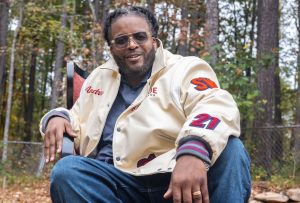[This is a second three-part series on Charlie. This is the first installment.]
It was during mid-flight, perhaps somewhere over Virginia, that a thought hit me and I turned suddenly, excitedly toward Tink.
“Let’s visit Charlie Tinker’s grave while we are in New York!” I exclaimed. The notion sank into his brain and washed slowly across his face. Silently, he nodded in agreement.
For all of the hundreds of columns I have written, nothing has struck the fancy of readers as did the three-part series I wrote from the diaries of my husband’s great-great-grandfather, Charlie Tinker, who worked closely with Abraham Lincoln in the White House.
I was surprised, even stunned by the reaction of readers who wanted to know more about this man who had touched the black cloth of history and had been diligent enough to record what he saw and heard.
As one of four telegram dispatchers in the War Department, Charlie had a front row seat to a war that devastated our nation and a shoulder-to-shoulder friendship with the President. In our safe deposit box are two handwritten notes from Lincoln to Charlie proving the closeness of their friendship.
So it was that on a cold, rainy winter’s day, we took a cab from Manhattan to the historic cemetery where Charlie is interred. The cab driver dropped us at the grand stone entrance, a place that looks like it would sit most comfortably among England’s ancient buildings.
As the cab drove out of sight and the rain gained intensity, the guard searched the directory of Green-Wood Cemetery, a place where famous men like Samuel Morse (ironically, the inventor of the telegraph that gave Charlie a place in history) are buried.
“Follow this road,” the guard began, proceeding to give us the names of streets we were to follow. “It’s a 45-minute walk.”
Thunderstruck and chilled, Tink and I gaped at each other. Forty-five minutes? There was no choice, though. Like the children of Israel, we had come too far to turn back now. I pulled my hat closer to my ears, Tink drew his jacket hood over his head and, together, we carried forth. Had anyone ever told me that I would walk in the cold winter’s rain for one and a half hours to visit a dead Yankee, I would have retorted, “Right. And Sherman never owned a pack of matches either.”
But there I was. Journeying to see the final resting place of a man whose 30 diaries have been entrusted to our care. The graveyard was filled with monuments of all types from simple markers to high rising statues and grand, enormous tributes to those who there lie buried.
“What kind of gravestone do you think Charlie will have?” Tink asked.
Charlie, as I know him from his own words, was a man of class, dignity and humility, so it made it easier to venture a guess. “He’ll have a towering monument. One that will honor his family but not seem arrogant or overdone.”
Lo and behold, that’s exactly what we found. In the center of the section of Green-Wood where Charlie and his immediate family lie was a 12-foot-high monument sitting beneath the shadow of towering oaks, some with limbs broken and scattered on his grave.
As I dragged them away, I thought of my own great-great-grandfather buried in the cemetery of a tiny church that is within hollering distance of where the Appalachian Trail begins in North Georgia. His plain stone is small and leans precariously to the side. It is smudged in black from 150 years of weather and now is hard to read. I am surprised my family was able to afford that much.
It is an interesting thing about a man’s gravestone because it can tell so much yet leave so much more untold. What we read on his monument that day would drive us back to his diaries to learn more.
And, oh what we discovered.
[Ronda Rich is the best-selling author of “There’s A Better Day A-Comin’.” Visit www.rondarich.com to sign up for her weekly newsletter.]












Leave a Comment
You must be logged in to post a comment.